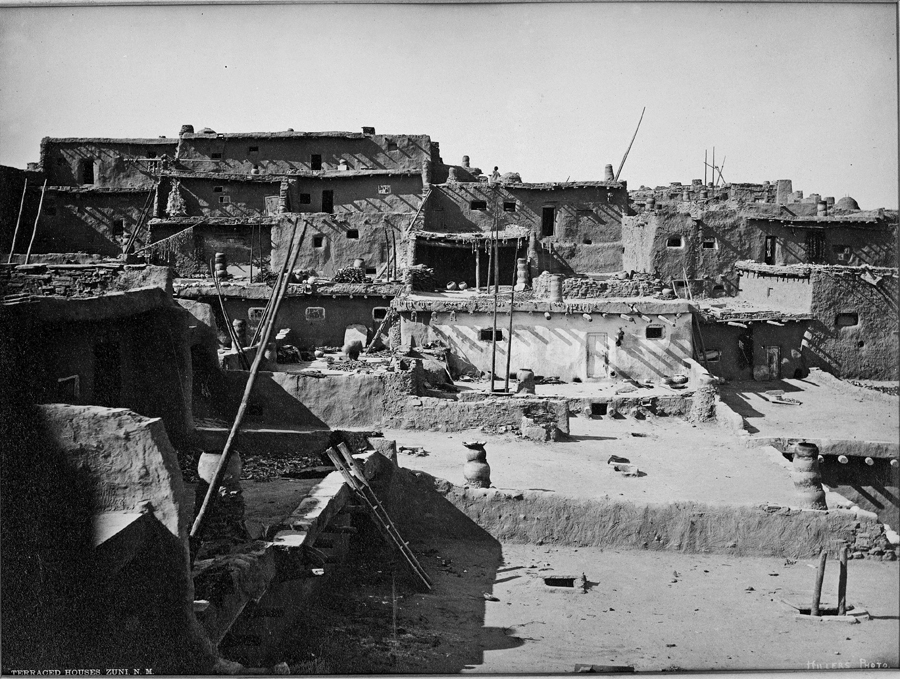
Zuni Pueblo (Halona Idiwan'a, "the middle place")

Above: Terraced Houses, Zuni, New Mexico, photographed by J. Hillers and W.H.Jackson, 1872-89.
Located in west-central New Mexico about 150 miles west of Albuquerque. Ancestral occupation of the Zuni and Little Colorado River valleys began between 500 and 1000 C.E., and was influenced by Chacoan, Mogollan, and other Southwest Amerindian cultures. With the collapse of Chaco culture, the village of Halona, was built. Present village lies upon the ruins of the village of Halona, which the Spanish explorer, Coronado, called one of the cities of "Cibola" (Seven Cities of Gold). The reconstruction shown is based upon the Victor and Cosmos Mindeleff's report of 1891 C.E., and does not show the Catholic Mission Church, which was not part of the original village.
Elevation is 1917 meters (6289 feet) above sea level.
Materials: mud mortared stone walls with mud plaster, wood log roof structure, with mud/clay roof.
Data for CG model:
1. Morgan, William N., 1994. ANCIENT ARCHITECTURE OF THE SOUTHWEST, University of Texas Press, Austin, Texas.
2. Mindeleff, Victor, & Mindeleff, Cosmos, 1891. A STUDY OF PUEBLO ARCHITECTURE: TUSAYAN AND CIBOLA, Eighth Annual Report of the Bureau of Ethnology to the Secretary of the Smithsonian Institution, 1886-1887, Government Printing Office, Washington, D.C..
http://www.gutenberg.org/ebooks/19856
3. Gregory, David A. and Wilcox, David R., 2008. Exploring Zuni Origins, Center for Desert Archaeology, Archaeology Southwest, Tucson, AZ.
https://www.archaeologysouthwest.org/product/exploring-zuni-origins-22-02-pdf/
H_tmb.jpg)
G_tmb.jpg)
BNscaledChurch_tmb.jpg)
N-copy_tmb.jpg)
J_tmb.jpg)
